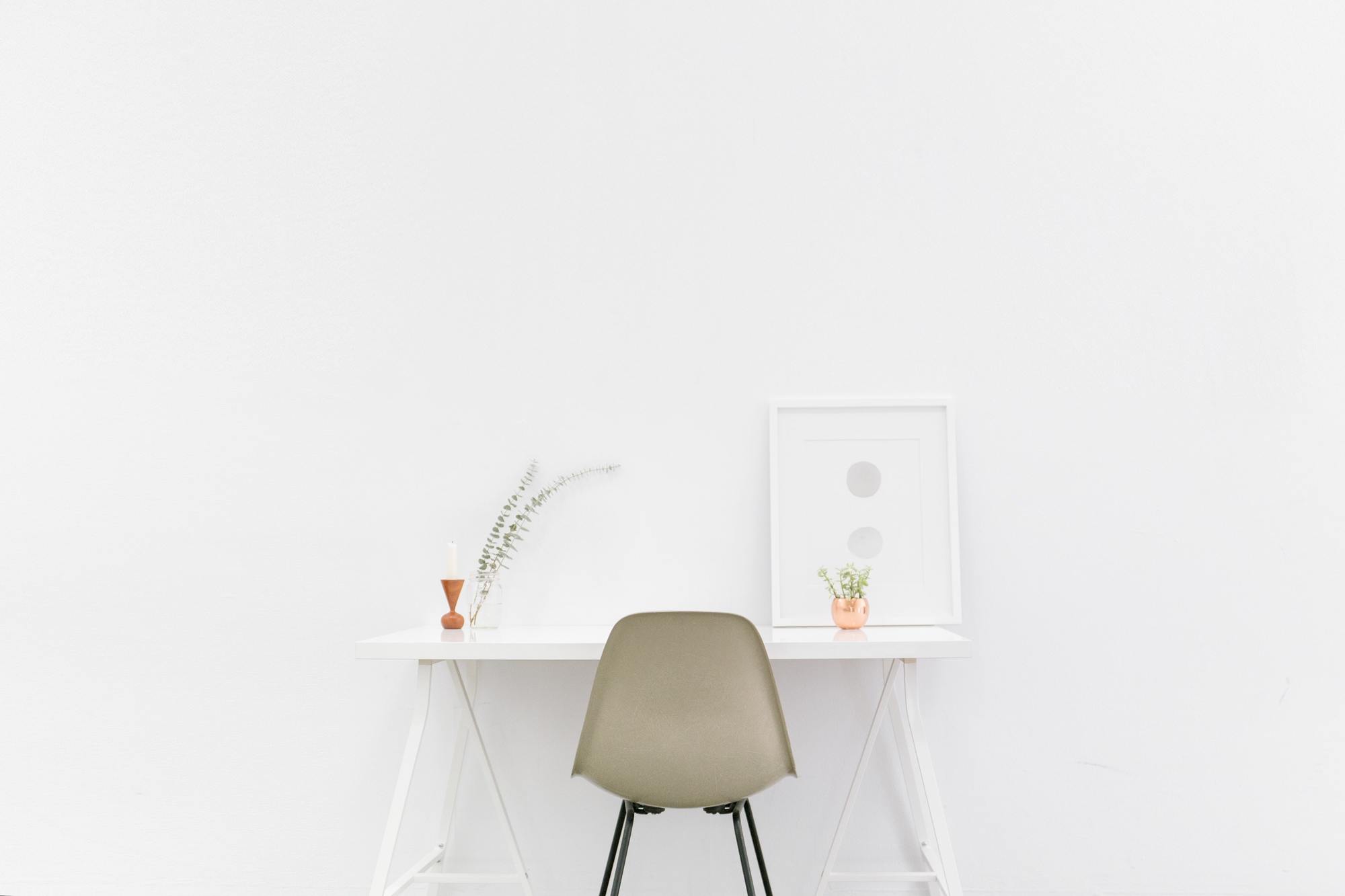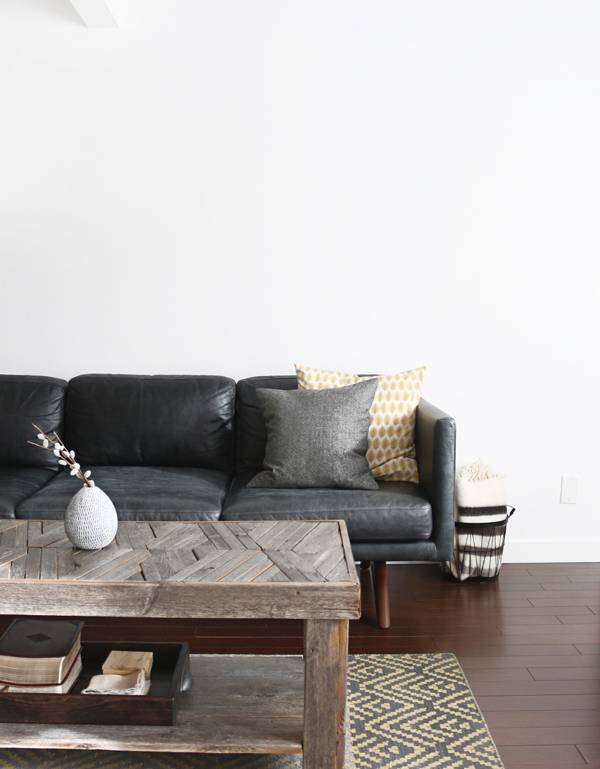It’s tempting to think of minimalism as a “must do” trend. There’s been so much chatter online, in books, and on podcasts about it lately – it’s seemingly on everyone’s mind. Minimalism is getting maximum exposure! For those new to the concept, it’s also all too easy to peek at any of that material and feel immediately overwhelmed.
Ironically, it’s that overwhelming feeling that is usually what starts people down this path AND is the leading cause of falling right back off.
So, let’s approach this differently. Instead of worrying about what minimalism means “out there,” or feeling like we need to adapt an all-or-nothing mentality to get on board, let’s try just dipping a toe in and testing the waters. Feels good, right?
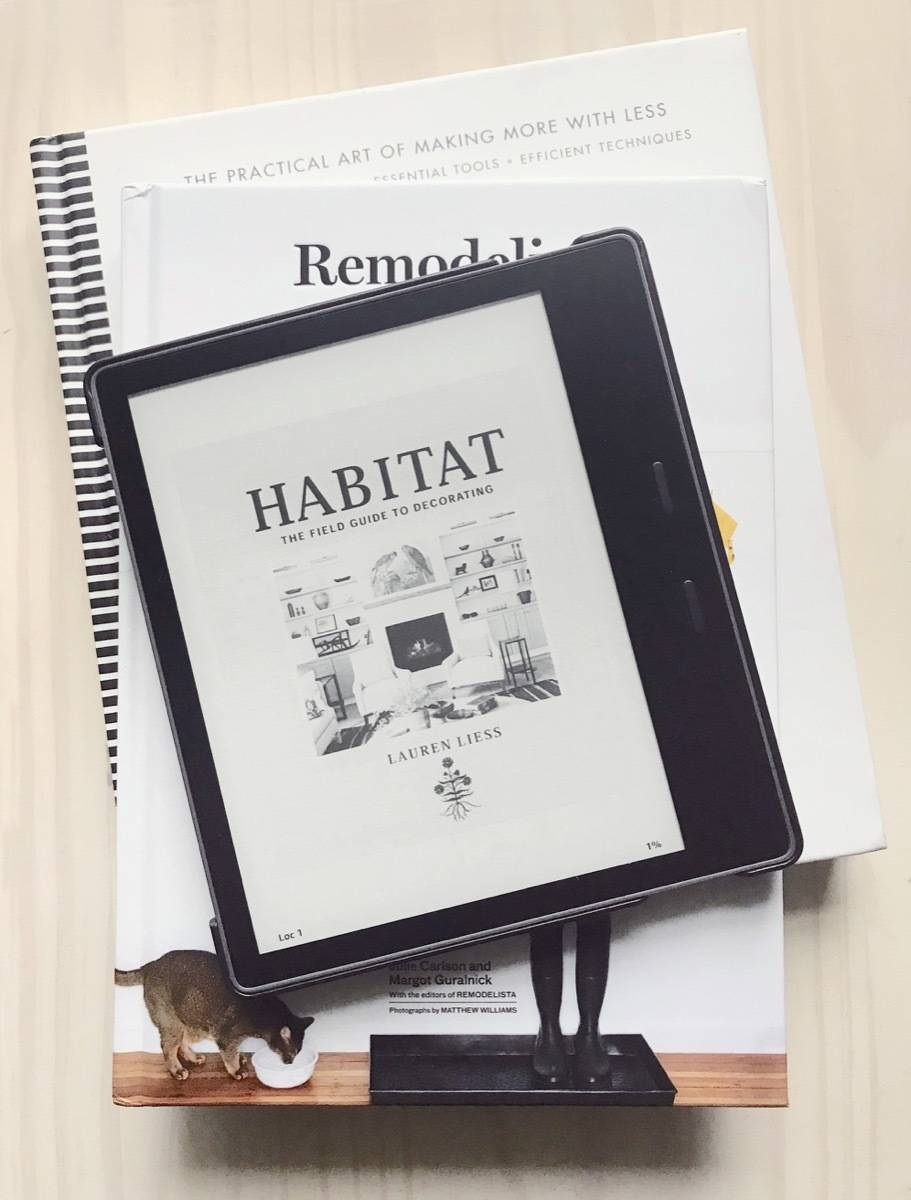
First, surround yourself with the vibe.
Enjoy some time learning a bit about what minimalism really represents and looks like in real life. It’s not solely about stark, sleek interiors or capsule wardrobes. No one’s ever accused me of living a minimalist lifestyle, but there is something in the vibe itself that speaks to me: it’s about keeping things essential. (Between you and me, that’s the word I tend do use when I’m trying on aspects of minimalism, like one might try on a new outfit.)
Scan the blogs, get lost in the gorgeous books, check out a few pins, and maybe listen to a podcast or TedTalk. Gather up your ideas about what minimalism could look like in your life, and see what the common themes are. Feel where this hits you – what pain point does this research bring up? Forget what everyone’s saying you should do.
Next, pick ONE thing.
Yep, this is where you already start practicing what you’re going to preach. Instead of trying to boil the ocean of lifestyle areas that need tweaking, identify the one thing that will 1) impact your life in a meaningful way, and 2) give you a quick win. There’s nothing like momentum and success to keep us on the path when trying to make a shift.
Is your pain point a cramped closet, cluttered desk, chaotic mealtime, or an over-scheduled calendar, perhaps? Then, start right there. Don’t fall into the trap that minimalism is an on and off switch; you can use the dimmer.
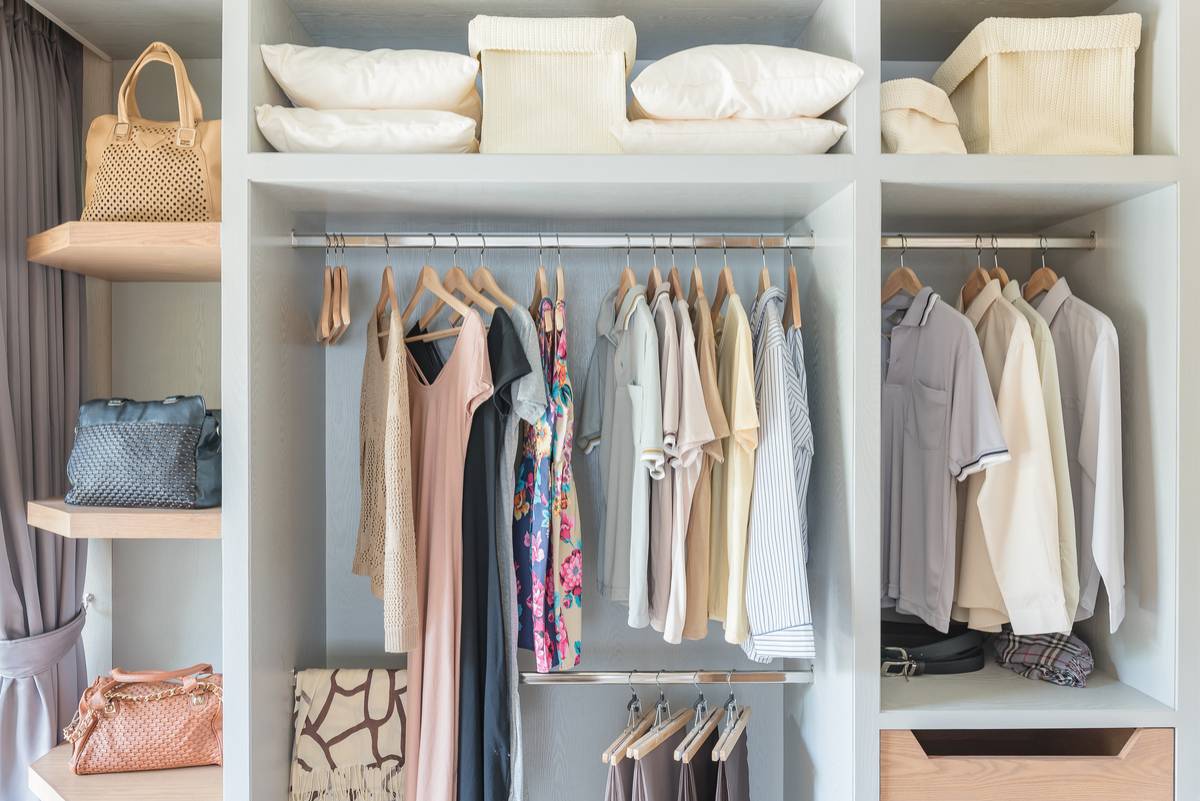
So, if your closet has lost its mind and you’ve not worn half that stuff for eons, then envision what a capsule wardrobe might look like, and start putting together a “draft” version for yourself. Apply a little Marie Kondo, and strip out the things that don’t bring you joy or inspiration. And get real if things are damaged, out of size, or otherwise unwearable now. You’re living now, so prioritize the things that support your life today.
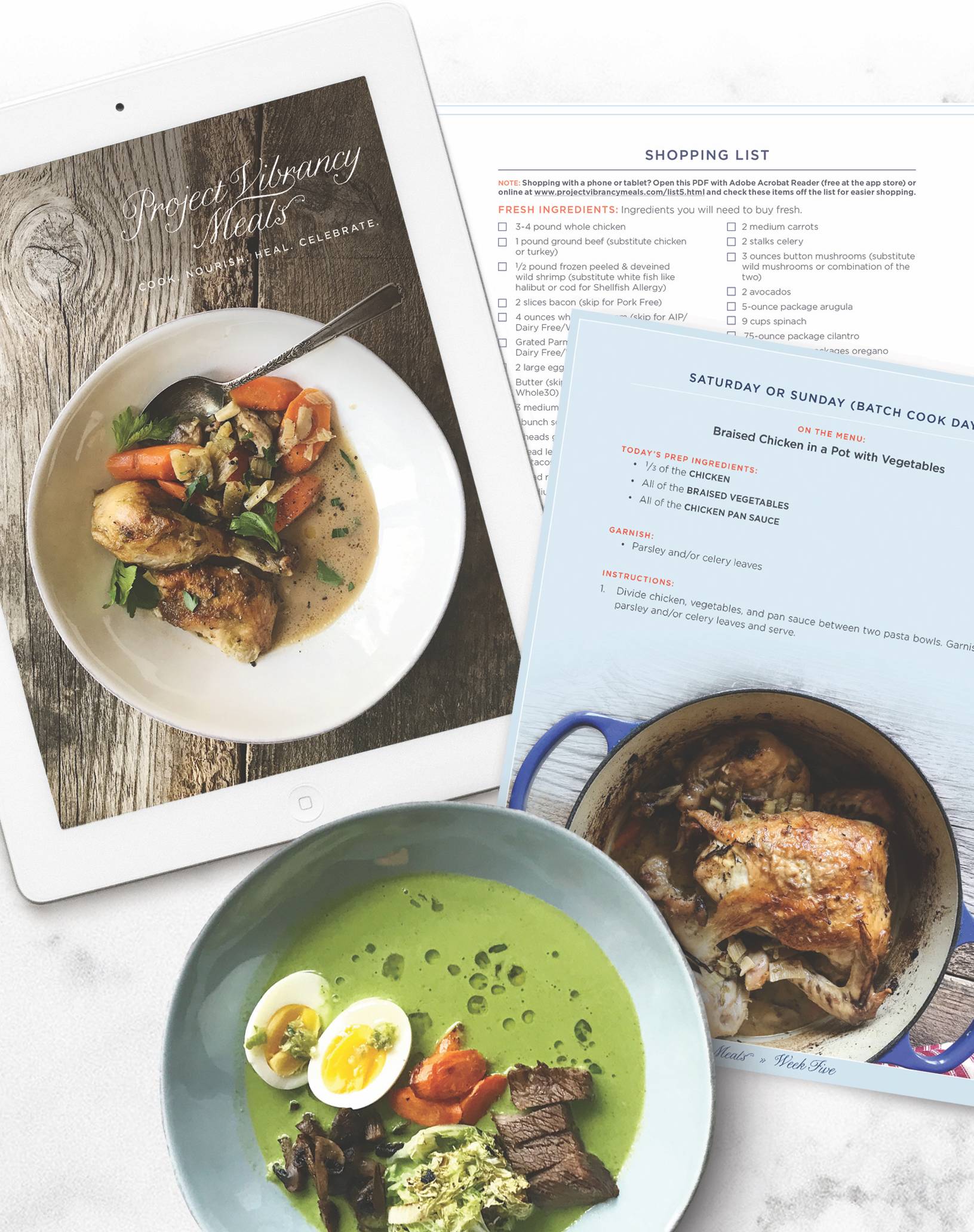
Give technology a good, hard, side-eye squinty look.
Tech can be your best friend or your kryptonite as you approach minimalism. Use it for good, friends.
Try these ideas:
- Go as paperless as you can. It’s 2018, let’s do this.
-
Take breaks from social media & the relentless news cycle. The stress of keeping up often fuels the behaviors that got us into the maximalist, over-spending, stuff-collecting groove to begin with.
-
Lean on apps & digital services that can make your life easier. Struggling with mealtime decisions or spending too much money on take out? It’s not a sign of defeat to pay someone else to do the meal planning; subscription services like Project Vibrancy Meals (pictured above) can do the heavy lifting for you. Or if money management is one of your Achilles-level pain points, apps like You Need A Budget can be a game changer.
-
Learn about minimalism, essentialism, and other related practices on podcasts and blogs online. The Minimalists is one of my favorites.
Bonus points: Try a challenge! Most of the minimalist & simple living blogs offer jump-starts by way of simple challenges. Just remember to keep yours focused on your ONE thing and don’t overdo it.
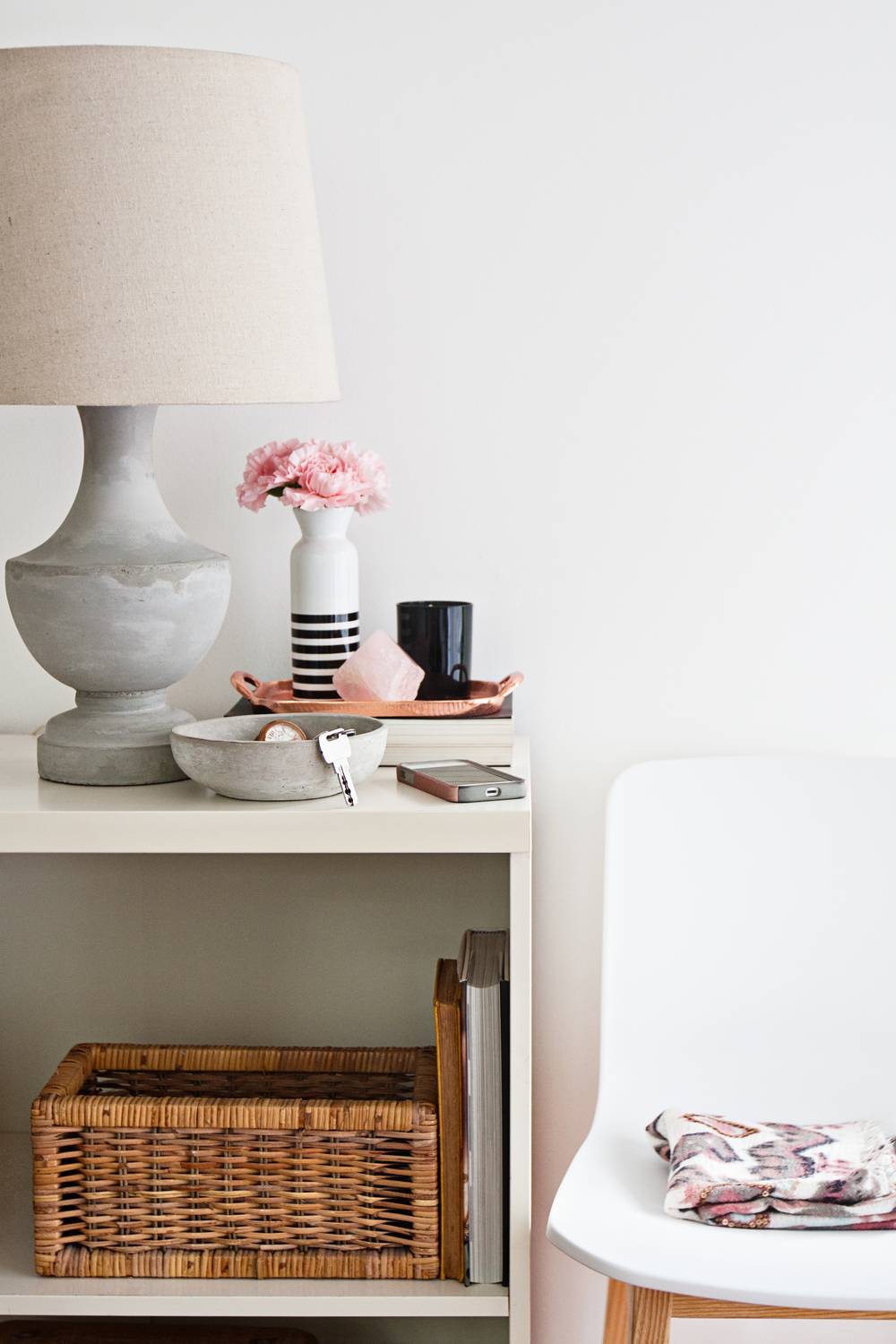
Adopt a new mini-routine that supports your “one thing.”
The most effective behavior changes happen when they become almost mindless, like turning on the coffee pot each morning or grabbing your keys before you walk out the door. Once you have your minimalist goal in mind, create a little routine around it that connects the behaviors to the change itself.
So, for instance, if clutter is your bug, start by creating a landing zone for keys, bags, mail, and other papers & detritus that come in the door with you. Make it your new habit to empty your pockets, dig the receipts out of your wallet, drop the change into a jar, leave the keys in a pretty bowl with your sunglasses, and plug in your phone to charge. Boom. You’re on your way to a behavioral baby step that’s directly connected to the everydayness of walking through the door.
Finally, reflect on what’s working…and what’s not.
I love a pen-to-paper journal for this, but use whatever format you prefer. There is little point in pushing for a change when it’s not meeting your needs, or is only meeting them part-way. As with most “lifestyle” practices or approaches, it’s always best to be honest with yourself and take the parts that work, and leave the rest in the dust. There are no martyrs in minimalism…that just wouldn’t be essential or necessary, would it?
As an example, I love my Kindle. I use it each and every day and have since Kindle 1.0 was a thing. But, deep in my heart, I also love books…the smell, the feel of paper, the weight, and certainly the look of them on my bookshelf. So a book-free life is not for me. But I’ve adopted a new mentality towards how I buy books and what I keep around so that it works for my approach.
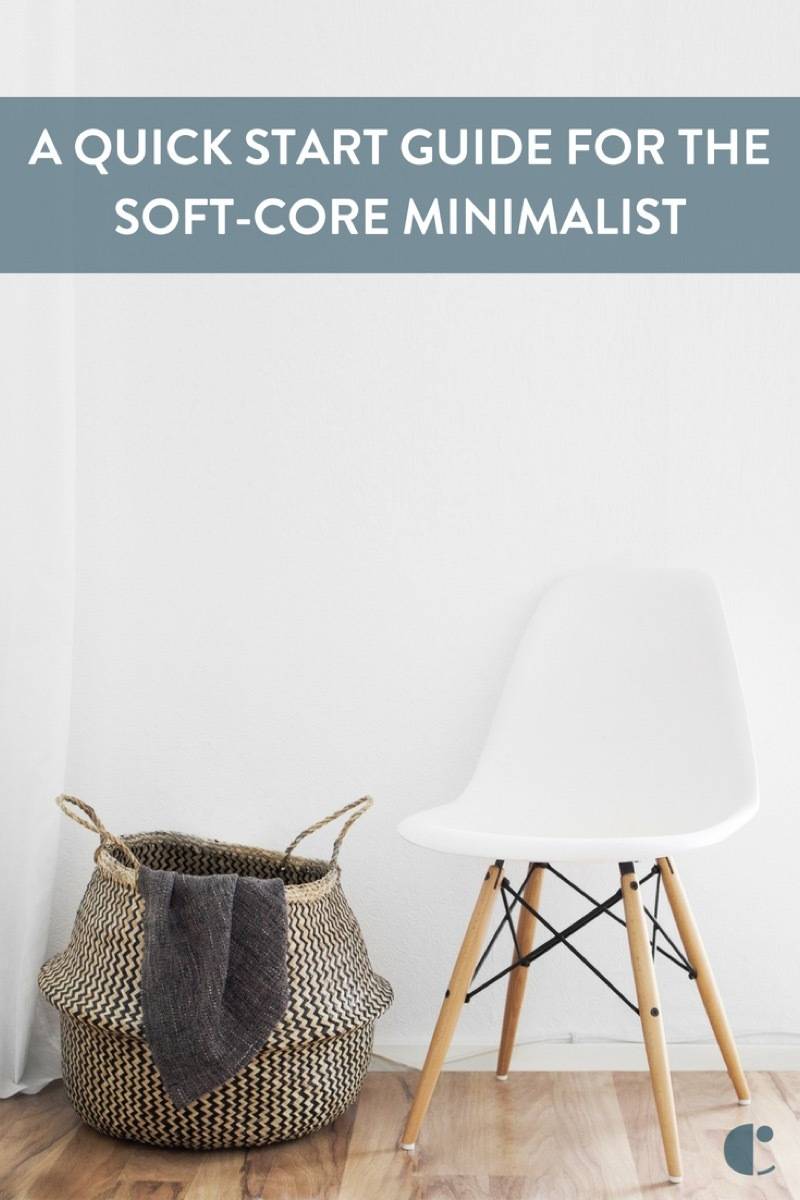
At the end of the day, trust yourself to learn the basics, practice a bit, and then tweak what you’ve got to make it work for you. Start simple, get the small win, and keep on easing in.
